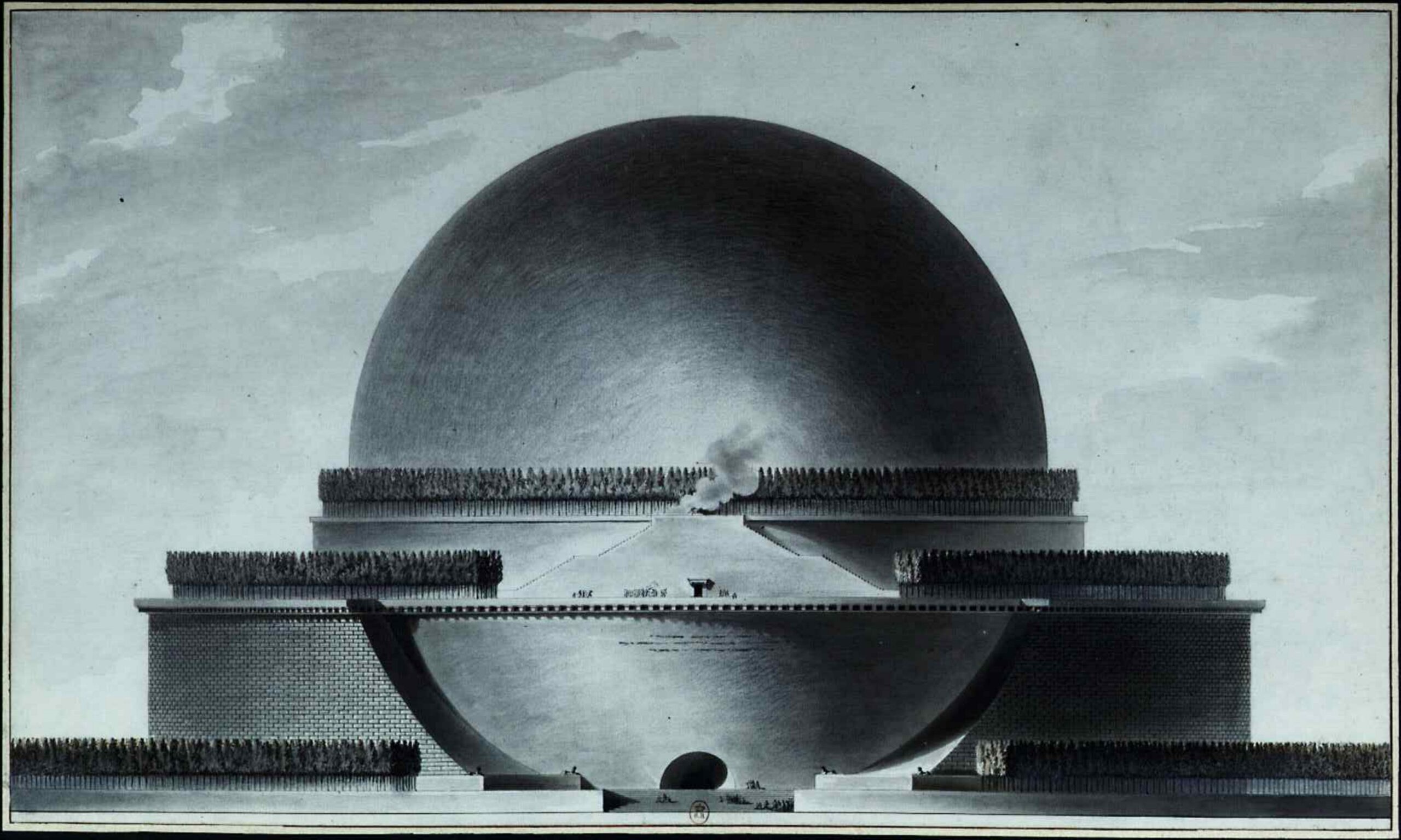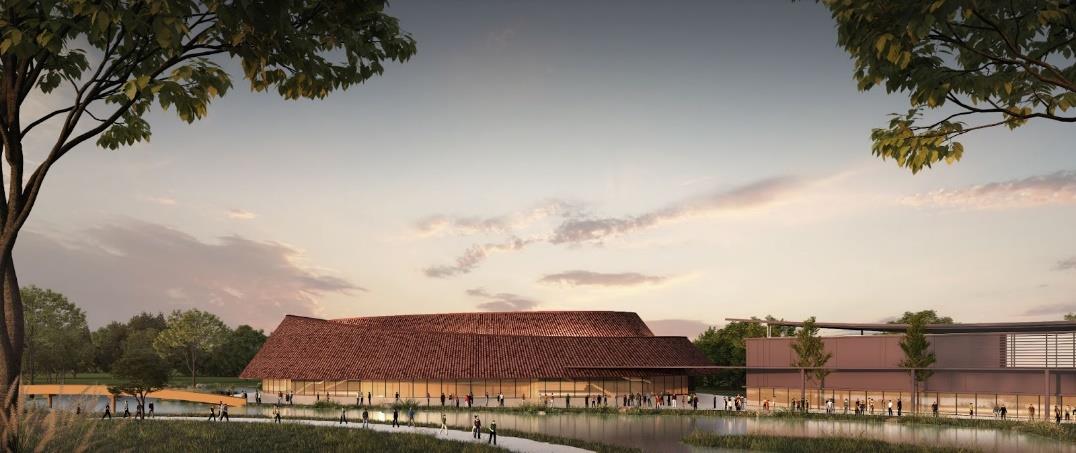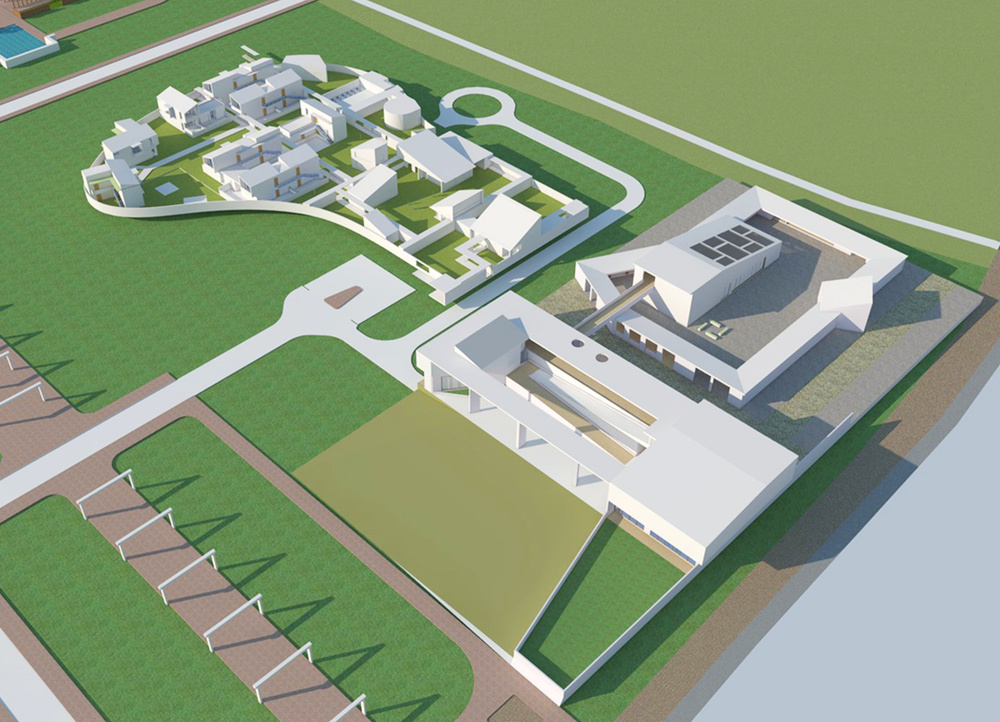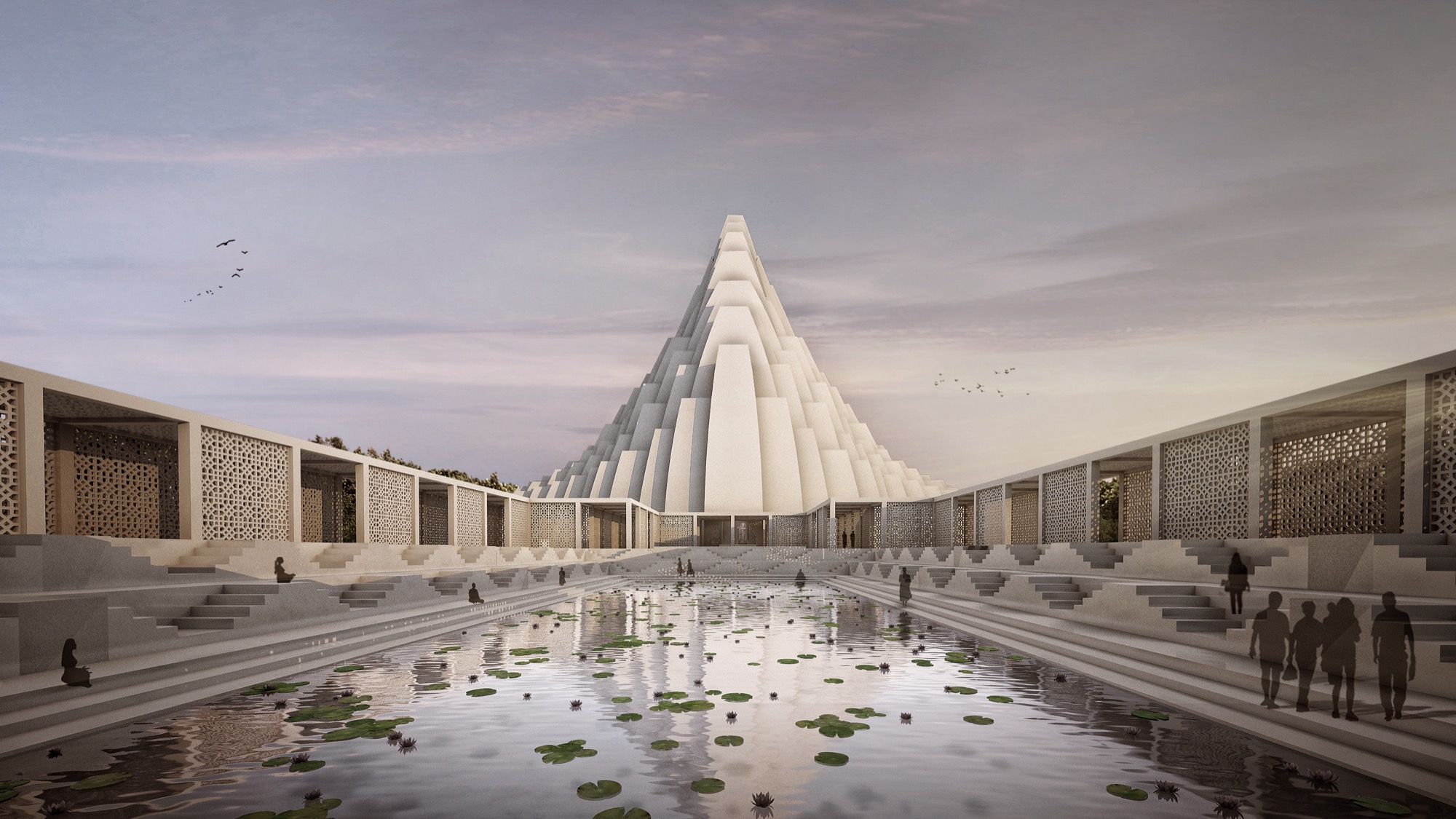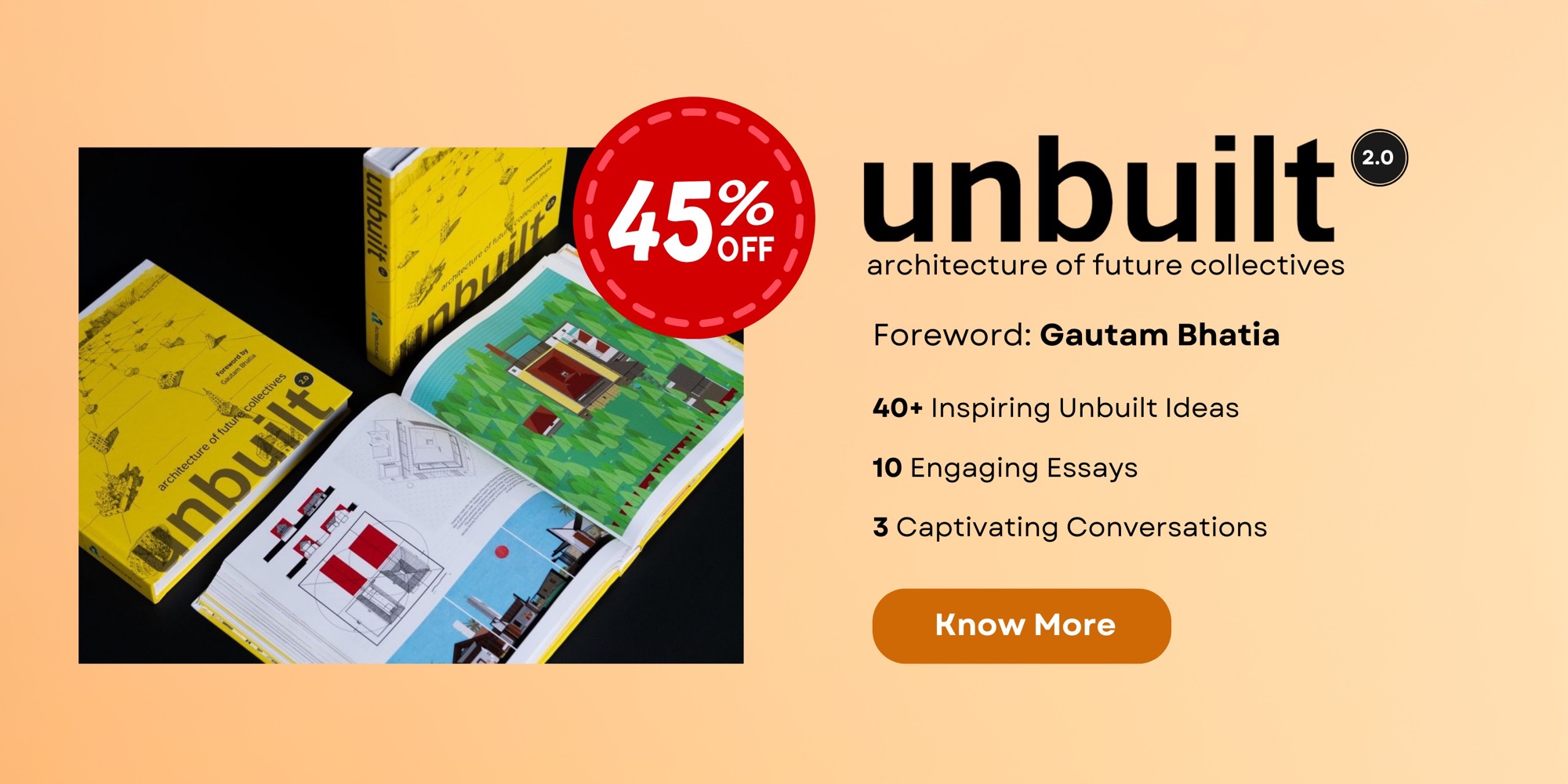The proposal by Studio MADe was declared winning entry for the competition.
The social program in most popular temples in India is unique where pilgrims traditionally spend fleeting time inside but would have been part of the procession to arrive at the sanctum sanctorum for hours singing and chanting. Afterwards, they would go quiet and peaceful and linger around the precincts. Our response, therefore, focuses on the path and the un-built space rather than the built forms and tries to heighten this journey of the pilgrim.
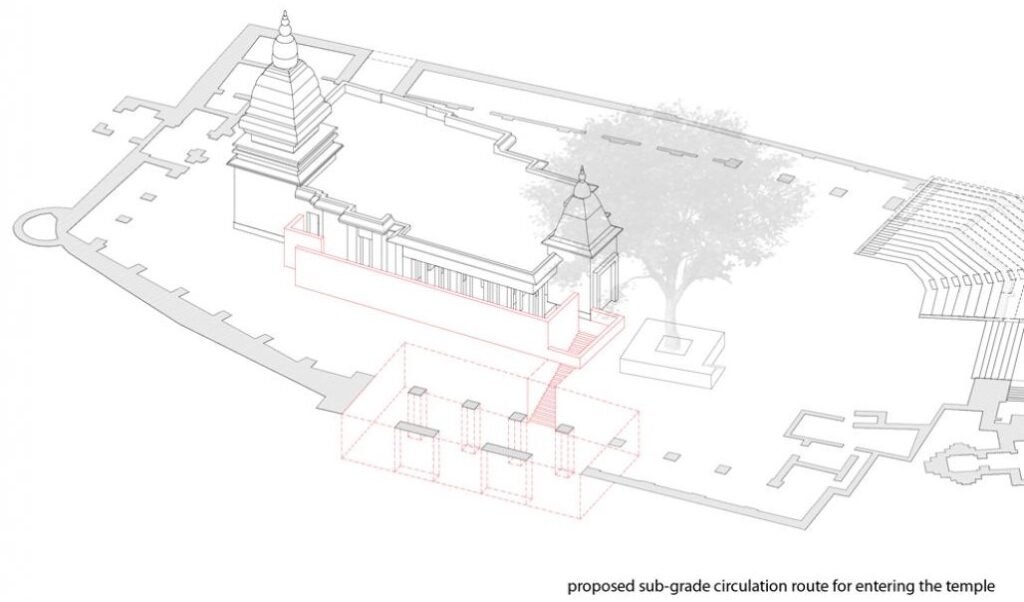
The elegance and complexity of the spaces in the 400-year-old temple of Tuljapur demonstrate a method of growth by accretion without resorting to any formal plan. By enhancing its core passageways so that it continues to grow in the same spontaneous way, we have proposed a restructuring that is sympathetic to this history and true to the context. The intervention here is not that of creating an impactful architectural footprint but to transcend the basic needs of the pilgrim and enrich his/her experience in the temple and the town.

The complex is unfolding like a giant maze. As I take the sequence of platforms and steps, patterns are finding me. It looks like an un-composed fusion of built volumes giving shape to peculiar spaces between them.
Somewhere at the end of these disjointed pieces, is the small but compelling temple with a perfect form, anchoring this entire place. I wonder how the whole complex evolved, putting on layers of materials, craft and techniques of construction, not to mention the overlays of patina – dulled, sobered and becoming richer all the time. The multiplicity of form and detail is spanning time itself and standing testimony to the temple’s evolution into an important place of worship.
It’s a revelation …

As I see the pilgrims pouring from the fort-wall into a vast landscape after the darshan, I can’t but stop wondering the sudden openness and spatial relief from the controlled path inside the temple. It’s like a gushing, meandering river meeting the ocean. I can’t but help relate it to the transition of the pilgrim himself – from a dense huddle to a vacuum, from animated energy to serene silences. Was it always planned like this?
The clues and questions are breaking-in; I can build a sacred space but what can I do for an already entranced and immersed pilgrim? Can I design beyond the defined and the quantifiable; more than giving him amenities and services? Is the transition of the pilgrim a direction, perhaps to make a garden, cascading waterfall, or a quiet place to meditate? Can these patterns translate into a lead for future growth?
“It’s Navratri and the spectacle beholds me – an un-choreographed yet rhythmic procession of human traffic – animated, winding and waiting its way to the temple as if in a trance.

A place of worship is more than just a space where pilgrims converge for prescribed rituals and spiritual fulfillment. Its characteristics transcend the mere concentration of facilities so that the meaning of the place assumes an important identifying role for the devotees and its town. Sacred places have survived for centuries because they have provided the community with cultural stability, security and guidance inits behavioral patterns. These places collectively represent humankind’s greatest investment in energy and materials.
In the case of the 400-year-old Tulja Bhavani temple, a number of factors have contributed to the loss of this feeling of sustenance. The temple precinct has suffered from unregulated growth and additions without a formal plan. This has led to loss of spatial coherence, a quality usually appreciated in places of worship.
Moreover, absence of land use regulations has created an almost permanent state of congestion on main routes of approach to the temple precinct. With increase in pilgrims over the years – currently estimated to be 900,000 a day during Navratri – there is a pressing need to increase the holding capacity of the pilgrims and regulate their movement. It is important that these challenges be met with cultural understanding of the past as well as the consciousness to be part of our times.
Besides focusing on the brief to increase the capacity, the proposal is largely driven by sensitivity to the origins of the temple, its physical setting and the needs of the pilgrims. It frequently returns to the path and the un-built spaces since traditionally, pilgrims (in most temples in India) spend fleeting time inside the main temple but will have spent hours as part of the procession to arrive at the sanctum sanctorum.
The project is faced with a set of unique complexities: locals’ resistance to change, limitations of growth imposed by undulating terrain, and lack of vehicular access for movement of material during construction. These are, in brief, the determining factors behind a series of measures proposed which aim to regenerate the temple precinct and extend to the immediate surrounds and the town of Tuljapur.


The essence of the proposal is a dialogue between what exists and what is
proposed which manifests itself at multiple levels.
At the outset, the proposal identifies the need to streamline the movement of pilgrims and reduce conflicts by separating entry and exit points to the temple precinct. This is addressed by developing an exit on the northern side beside the main temple. Additionally, all existing access points to the precinct are revived to increase the range of options for routing the pilgrims during peak convergence.
To moderate the volume of pilgrims, a holding arena of 12500-sq.ft, spread over two levels is proposed adjacent to the main entrance. The objective is to provide waiting space for pilgrims before they enter the temple precinct.
All queue lanes located around the ambulation tank and the main temple are either moved to the side of the perimeter buildings or below the surface, thus facilitating easy movement of pilgrims. While maintaining traditional processional path ways, the option of an underground circulation route for devotees entering the main temple
has been added. This further reduces the conflicts in the quadrangle surrounding the main temple.

Many dilapidated buildings within the precinct are opened up, restored and reused; one instance being the administrative office which is moved to the central wing creating more waiting space for the pilgrims.
Once the journey through the main temple is complete, new amenities have been provided for pilgrims at the rear end to bring the experience to a pleasant closure. After the narrow constraints of the main prescient, the space here opens up offering a sense of release. A festival court and an open gallery to deities are proposed while the rest of the area is conceived as a park or a place for meditation for both pilgrims as well as people from surrounding areas.
At the level of the town, all links to the temple complex have been streamlined and revived by making entry routes to the temple complex pedestrian, restricting vehicular movement to the parking lot, and relocating markets and vendors off the approach routes. For days of peak convergence during Navratri, a temporary camp like arrangement to hold pilgrims with basic amenities along the main routes into the town has been suggested so that the town is not burdened with numbers beyond its capacity.

The appeal of Tuljapur is largely due to density of pilgrims moving through the un-built open to sky spaces within the precinct – what we term as energizing voids.
Preservation of this character is key to understanding how the temple precinct can grow without undermining its uniqueness and the proposal aims to achieve this with sensitivity to the needs of the different groups of people who use the space.
Project Facts:
Location: India
Program: Religious buildings
Architecture firm/ Architects: Studio MADe
Type: competition
Drawings:






